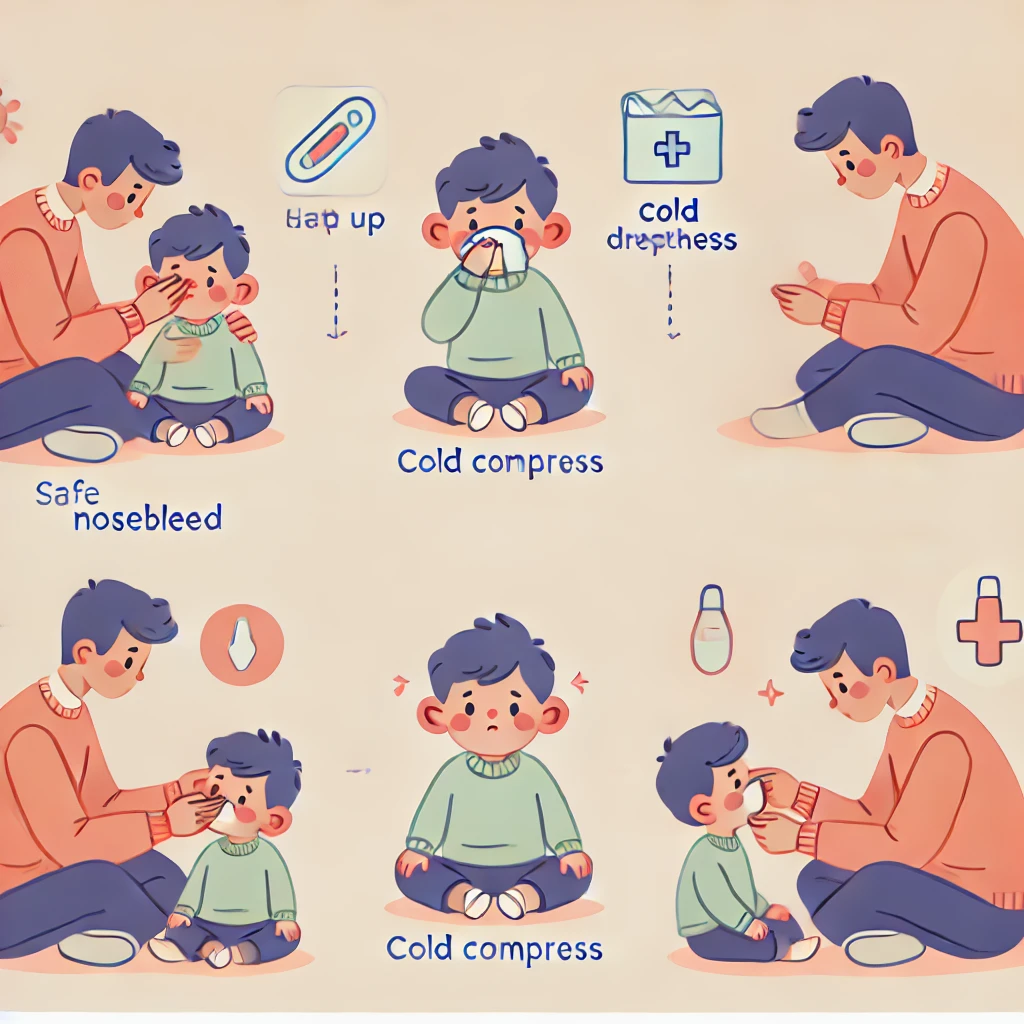Safe and Effective Ways to Handle Nosebleeds in Children

When children experience nosebleeds, especially in dry weather, it can be a distressing sight for parents. Often, parents might react with concern, wondering:
“Why is my child getting frequent nosebleeds without any injury?”
While wondering this, parents instinctively try to stop the bleeding as quickly as possible. But what’s the right way to help a child manage a nosebleed?
Common Mistakes to Avoid
Tilting the Head Back
The natural reaction for many is to tilt the child’s head back, thinking it will prevent blood from flowing out of the nose. This method, though widely suggested even in some school safety classes, is incorrect and potentially dangerous. Tilting the head back causes blood to flow from the nasal cavity into the throat, where the child might swallow it. Swallowed blood can lead to nausea or vomiting, making the situation even more alarming. In severe cases, if the child is distressed or crying, there’s a risk of blood entering the windpipe, which can lead to choking or even aspiration.
Using Cotton or Tissue Plugs
Another common reaction is to insert cotton or tissue into the nostril to absorb the blood. However, this approach also poses risks. Cotton or tissue may carry bacteria, which can cause infections in the delicate nasal lining if it’s already irritated or broken. Furthermore, once dried, these plugs can stick to the nasal lining, potentially worsening the bleed when removed.
Raising the Opposite Arm
Some believe that raising the arm on the opposite side of the bleeding nostril might somehow stimulate the nervous system to constrict blood vessels and reduce the bleeding. This method is based on a misunderstanding of neurology. While the brain does control opposite sides of the body, blood vessel constriction in the nasal passages is primarily governed by the autonomic nervous system, unrelated to arm movement. Therefore, this method is ineffective for stopping nosebleeds.
The Right Way to Stop a Nosebleed
When a nosebleed occurs, it’s essential to use safe and effective techniques that can quickly stop the bleeding without risking further issues.
- Sit Up and Lean Forward
Have the child sit down and lean slightly forward. This position prevents blood from flowing down the throat and keeps it from being swallowed. Remind the child to breathe through the mouth and stay calm. - Pinch the Soft Part of the Nose
Use the thumb and index finger to gently pinch the soft part of the nose, just below the bony ridge, and hold for 10-15 minutes. Applying pressure helps stop the bleeding by compressing the blood vessels. Be patient—checking before 10 minutes might restart the bleeding. - Apply a Cold Compress
Place a cold compress or ice pack on the bridge of the nose or the back of the neck. The cold helps constrict blood vessels and can assist in stopping the bleeding. - Encourage Calm Breathing
Keeping the child calm is essential. Anxiety or crying can increase blood pressure, which can make the bleeding worse.
When to Seek Medical Attention
Most nosebleeds are harmless and can be managed at home. However, you should contact a healthcare provider if:
- The nosebleed lasts more than 20 minutes despite proper first aid.
- The child experiences frequent nosebleeds.
- There’s significant blood loss, or the child feels faint.
- There’s suspicion of a foreign object in the nose or recent nasal injury.
By following these steps, parents can ensure they’re using effective and safe methods to stop nosebleeds. Embracing gentle care and the right techniques will help both parent and child remain calm and comfortable, even when unexpected issues arise.